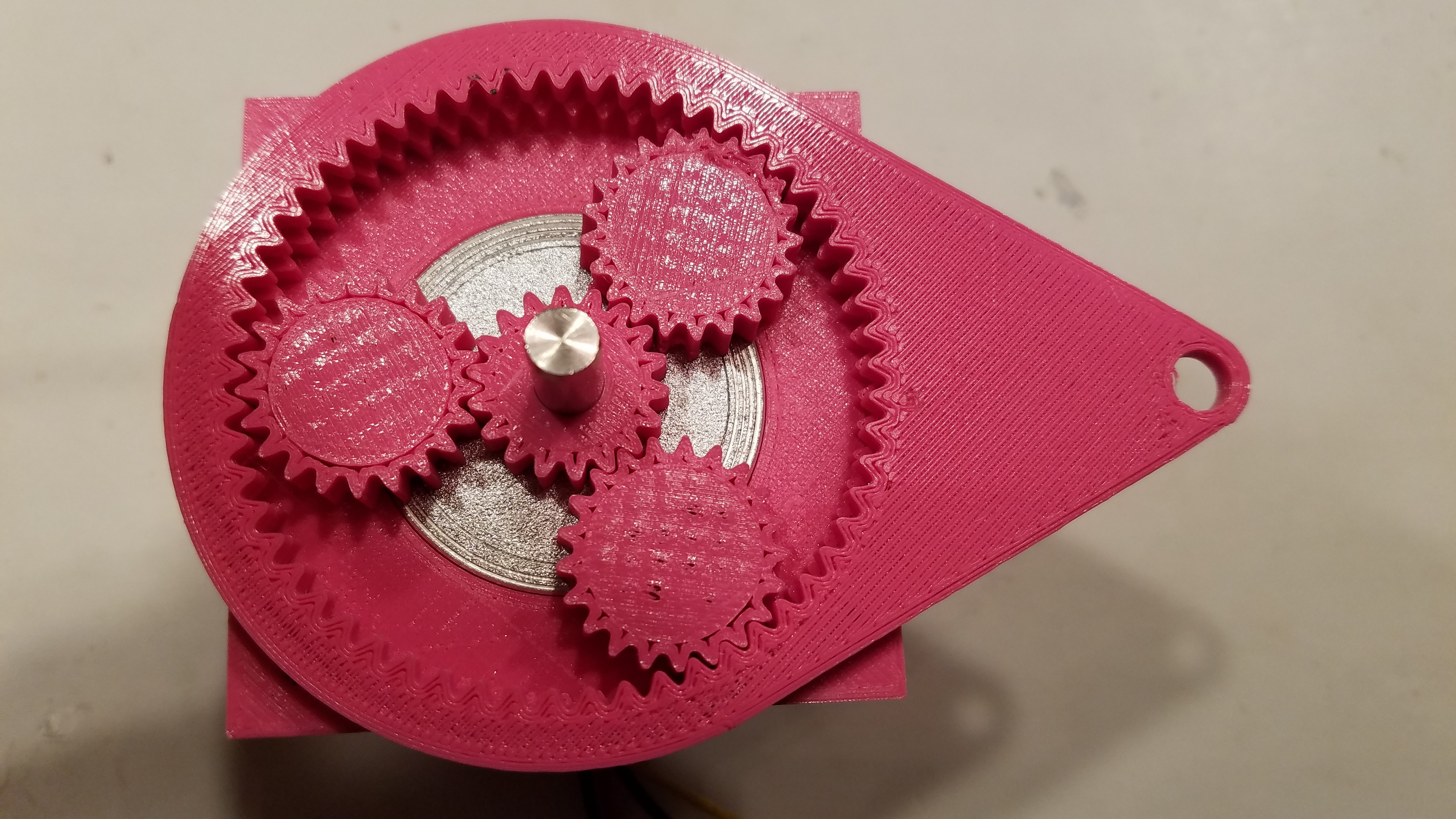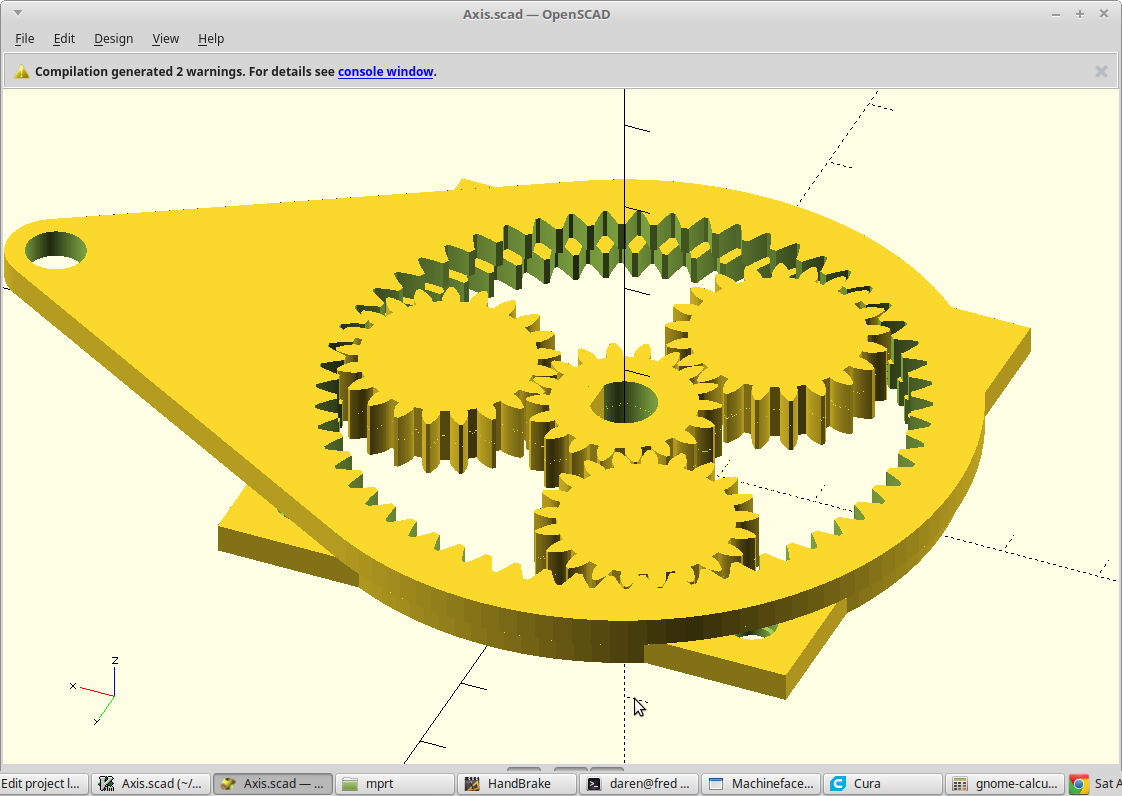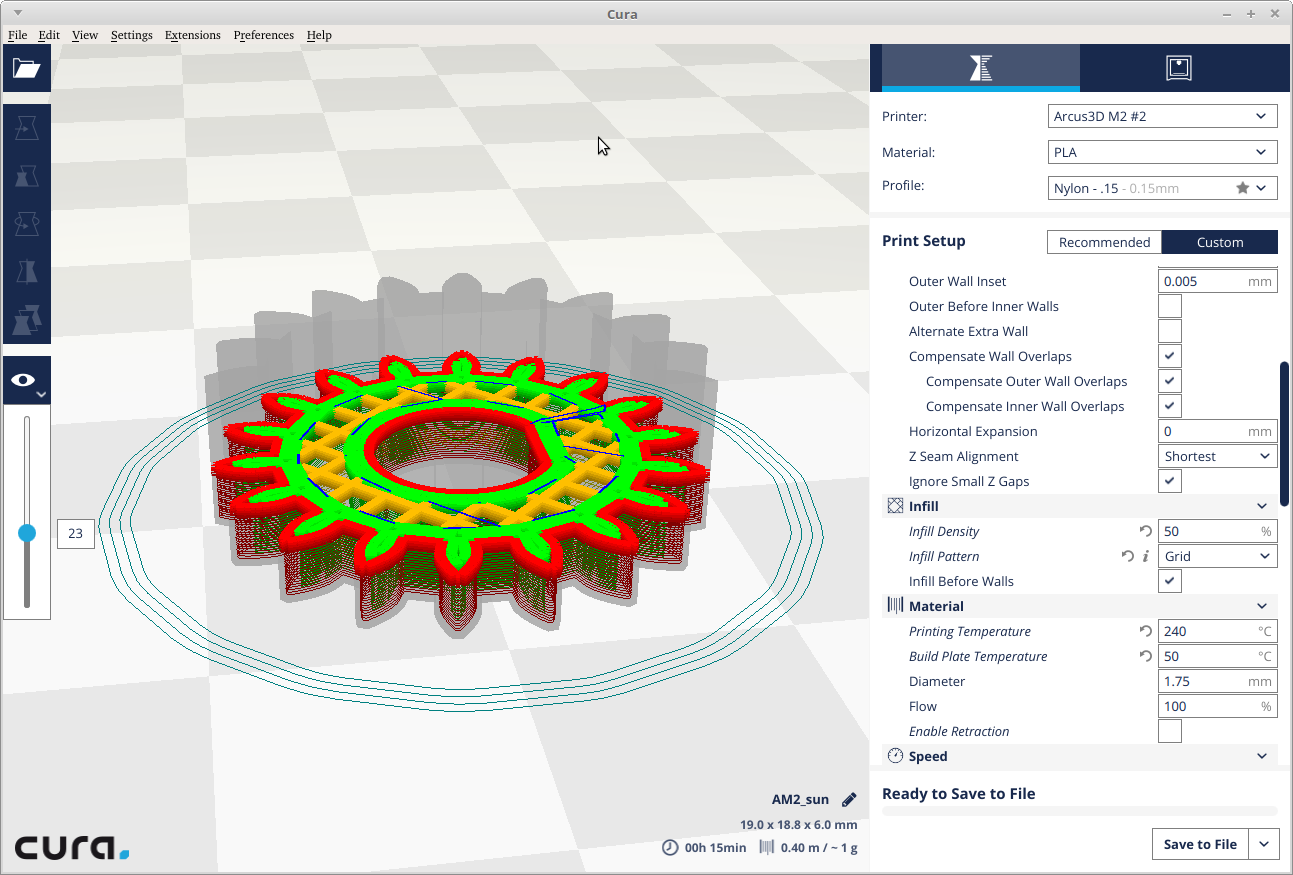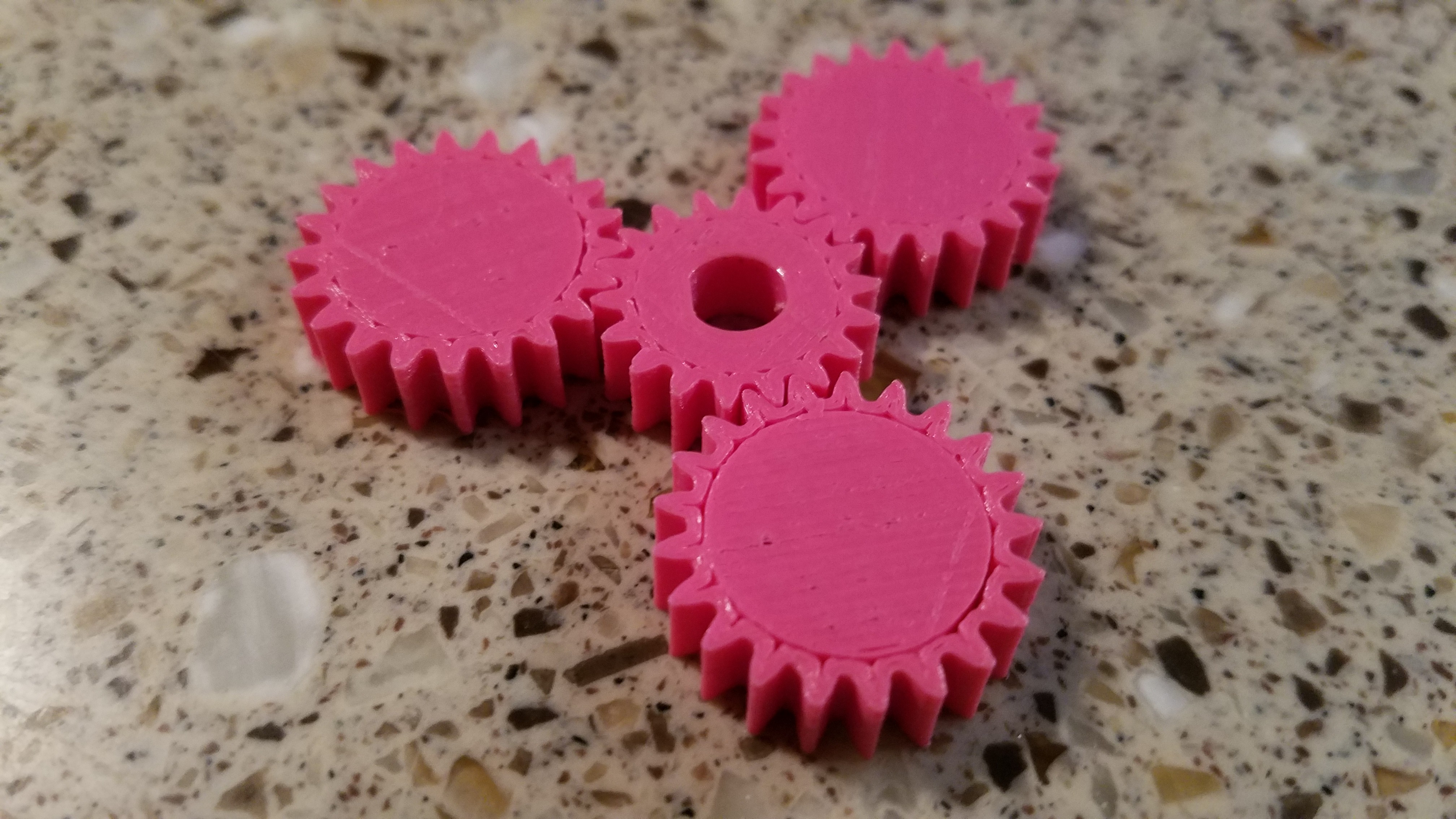-
Two wrongs, make a more wrong.
04/07/2019 at 06:26 • 0 commentsI both under-extruded and set values which were too large for backlash/clearance on my proof of concept.
The under-extrusion was mostly on purpose. I didn't need this to handle any kind of load, and under-extrusion of gears produces perfect profiles with far less thought.
However... the backlash/clearance values I used were from another project where I had also planned to intentionally over-extrude everything to ensure I had completely solid gears for my high-load application.
So the result is my gears don't mesh well and have massive clearance/backlash.
![]()
It does work though, but I won't do a video of it looking like this.
It probably didn't help that I also intentionally doubled the backlash value for the output gear to ensure it wouldn't bind as it will be running a less than perfect involute gear profile. I also increased the tooth pitch (which means smaller teeth) so I'm in uncharted territory for printing these. These teeth are smaller than I have ever printed at 0.4mm nozzle size.
So... 'doing the needful' as my co-workers of Indian descent like to say. :)
-
It's a kind of magic...
04/06/2019 at 18:19 • 0 commentsI'm beginning to deduce some of the magic required here to make the gears mesh.
I stumbled upon a compatible gear set by accident originally, but now I think I understand what is actually going on.
The rules:
- The sun gear tooth count must be divisible by both 2 and <num planets>.
- The ring gear tooth count must be divisible by both 2 and <num planets>.
- Stationary ring gear tooth count - sun tooth count must be an even number.
- Output ring gear tooth count = Ring tooth count +- <num planets>, with adjusted gear pitch to equal the stationary ring gear diameter. The adjustment to diametrical pitch = <ring_tooth_pitch>*(ring_tooth_count> +-<num planets> )/<ring_tooth_count>
So basically... for 3 planets I will need multiples of 6 for both the sun and ring gear tooth count.
For the test I've settled on 18 sun teeth, 60 ring teeth, and 57 output teeth.
Planet tooth count is a always a function of the sun/ring tooth count and ends up being = (<ring_tooth_count> - <sun_tooth_count>)/2. So for this test, they will have 21 teeth.
I increased my pitch a little so it still fits on a Nema 23, from 0.965 to 1.05 and I'm using a pressure angle of 24.
This is what that looks like.
![]()
Sliced.
![]()
Printing.
![]()
-
The source.
04/06/2019 at 03:20 • 0 commentsI re-used a previous source to build this one, so it is a complete mess with most of it commented out.
However, I'm putting it up for the benefit of those who want to see it. Don't judge me. :)
Also, if you want to be a part of working this out, ask.
MPRT - Modified planetary robotics transmission
The reduction of strain-wave, but using a 'single' stage planetary gearset.
 MasterOfNull
MasterOfNull


